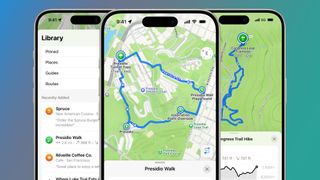This weekend, Google Maps turns 20 – and Stephen Ma is writing himself and his friends back into its origin story. Stephen Ma has every right to claim bragging rights for helping to hatch the world’s most popular online mapping platform. Instead, for the past two decades Ma, one of the four co-founders of Google Maps, has buried himself in a big black hole of anonymity. But not because of any shame or regret – it’s just that he isn’t one to blow his own trumpet.
![[Stephen Ma looking at the camera with blurred movement and trucks in the background]](https://i.guim.co.uk/img/media/7b8ed0c853edf915b2200050174324a4b92a87d2/0_216_4000_2400/master/4000.jpg?width=445&dpr=1&s=none&crop=none)
“I tend to be a very private person,” Ma says in a rare interview. “I find the limelight uncomfortable.”. In the years since launching on 8 February 2005, Google Maps has wormed its way into our daily lives, becoming – like water or electricity – an essential service. It’s a pocket atlas, compass, restaurant guide, bus timetable and the go-to search and recommendation engine for all our geospatial queries.
![[Google Maps logo on a smartphone screen]](https://i.guim.co.uk/img/media/d34c56574646707d77c2d6f98a8e35ac5d1c0ce7/0_173_5184_3110/master/5184.jpg?width=445&dpr=1&s=none&crop=none)
Google Maps has become an online juggernaut boasting more than 2 billion monthly users worldwide that remains on a trajectory of relentless expansion in both scope and scale. It also powers countless third-party platforms like Airbnb, Uber, real estate portals and food delivery and e-commerce platforms that rely on Google Maps’ locational and navigational prowess. The technology is now a key pillar of the Google/Alphabet technology complex, a company the author and philosopher Yuval Noah Harari describes as one of our “unfathomable, algorithmic overlords”.
![[Stephen Ma walking along a street]](https://i.guim.co.uk/img/media/6d3ee510ce35d3996dcb30e3c4d2396ea037a1d2/0_267_4000_2400/master/4000.jpg?width=445&dpr=1&s=none&crop=none)
Now, on the eve of Google Maps’ 20th anniversary, the 54-year-old Australian software engineer has had a change of heart. He wants to write himself back into the foundation story – as well as acknowledge others whose contributions have been overlooked or undersold. Being recognised as a Google Maps founder still garners a lot of respect from the Stem community – particularly in Australia, where Google Maps was born. It might not make you a household name, but it can open doors.
Stephen Ma’s story begins in the New South Wales country town of Cooma, where his family ran a Chinese restaurant. For 20 years until the mid-1980s, the Dragon’s Gate was a fixture on Cooma’s main street, serving Cantonese-Australian favourites such as chicken chow mein and sweet and sour pork. It provided a livelihood for the extended family and everyone pitched in. When he wasn’t attending school, Ma worked the till, taking payments, bookings and takeaway orders. In all other respects, however, he remembers it as a normal childhood – much of which was spent in front of screens.
“I did a lot of the stereotypical tech nerd things like playing video games and learning how to program on an Apple II computer,” he recalls. By 1998, Ma had graduated from university and was working in Sydney when he landed a job in Silicon Valley, just as the dotcom boom was careering towards peak insanity. Then the bubble burst and by the early 2000s Ma, along with thousands of others in the tech sector, found themselves unemployed.
Returning to Sydney, he was contacted by a former colleague and fellow Australian called Noel Gordon who invited Ma to join him and two other unemployed software engineers – Danish brothers Jens and Lars Rasmussen – to work on a startup. Their big idea was to build a new type of mapping platform. At that time, the undisputed market leader in online mapping was MapQuest, which had been acquired by the internet giant AOL in 1999 for the then staggering sum of $US1.1bn.
But MapQuest was clunky and lived halfway between the digital and analogue worlds: a user plotting a route had to print the turn-by-turn directions from their desktop or laptop computer. It was a digital dinosaur, completely unaware of the approaching cataclysm. Calling themselves Where 2 Technologies, the four partners based themselves in the spare bedroom of Gordon’s apartment in the Sydney suburb of Hunters Hill and began building a Windows application program they dubbed Expedition.
A screenshot of the 2004 prototype Ma shows me has a familiar look and feel. There’s an address bar at the top and in the centre, a map of downtown San Francisco with a route following Interstate 80 over the Bay Bridge highlighted as a red line. Two location pins, in the form of an American-style letterbox on a pole, mark specific locations. “I’m actually surprised how similar it looks to what Google Maps looks like today,” says Ma, inspecting the screenshot for the first time in many years.
This was the demo they presented to Sequoia Capital, the legendary Silicon Valley venture capital firm that has been bankrolling some of the biggest names in the startup world since the 1970s. The Where 2 crew was hoping to secure some seed funding and take the pressure off their dwindling personal savings and maxed-out credit cards. But in March 2004, Yahoo Maps launched a new feature called SmartView, enabling users to conduct map-based searches for categories like restaurants and entertainment. Today, it’s a standard feature on all online maps; back then, it was groundbreaking enough to spook Sequoia into pulling the plug on the deal.






















